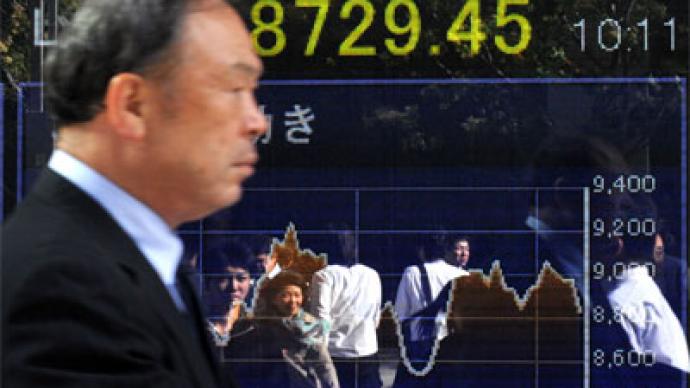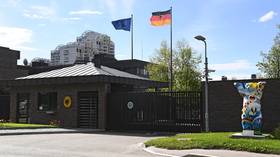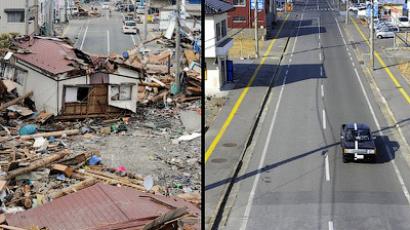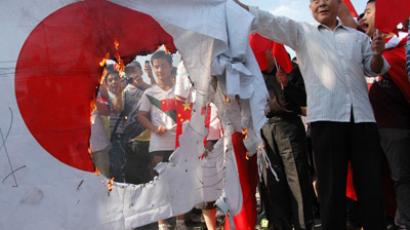Japan slips into technical recession

Japan's economy is technically in recession after it contracted for two straight quarters, according to fresh data released by the authorities.
Japanese April-June gross domestic product (GDP) was revised to a 0.1% contraction at an annualized pace or a 0.03% decline from the previous quarter, the Cabinet Office said on Monday. Previous data suggested that the second quarter GDP grew 0.1% from the previous quarter.The revised data means that Japan is technically in recession, having contracted for two quarters in a row. July-September quarter GDP figures show it shrank 0.9% from the previous quarter in July-September quarter. During the third quarter, Japan shrank by the equivalent to 3.5% annualized drop in GDP. A widely accepted definition of a recession is two consecutive quarters of economic contraction.“We had already said Japan was in a recession. Today's number strengthened our case,” Tomo Kinoshita, chief economist at Nomura Securities in Tokyo, told the BBC.Many experts expect the country’s GDP to contract in the current quarter as well. In October the Bank of Japan issued a report, warning the country is plunging into technical recession. “Taking into account the current trends, we can say that the economy is entering the recession,” it said. Japan is estimated to return to growth in early 2013, the Bank of Japan forecast.Despite the figures pointing to a recession, the Japanese government has urged caution on interpreting the figures.As the third-largest economy in the world Japan has been suffering from a strong yen, that dents exports, a recent diplomatic row with major trade partner China and continued fallout from last year's nuclear disaster and tsunami.Japan suffered the worst October trade result in more than 30 years with falling exports to China due to the territorial dispute and easing demand from debt-stricken Europe. The long running dispute re-emerged after the Noda administration bought a group of islands that China also claims. The move infuriated Beijing and triggered large-scale protests across China and resulted in drop of Japanese product sales. Exports to China – Japan’s biggest trading partner – sank 14% from a year earlier to 953.4 billion yen ($12.2 billion). A slowing economy isn’t a new issue Japan needs to address, James Corbett, editor of the current affairs website The Corbett Report, told RT.“…economically speaking over the past two decades since the bubble popped in late 80s early 90s, and for two decades Japan has been floundering to come up with any sort of way to stimulate the economy, but in the traditional Japanese fashion of not being too risky with anything that they try,” Corbett said. So far, the measures to help the Japanese economy remain sound mostly involved monetary stimulation. “… but there is a very big aversion to inflation or anything that could upset the apple-cart on the way to what they hope will be recovery,” James Corbett explained.Last week the government approved a stimulus package worth 880bn yen ($10.7bn) in an effort to revive the country’s growth ahead of the upcoming general election. The money released from reserve fund will be used to create jobs, support small businesses and rebuild areas hit during the March 2011 tsunami. The measure is expected to add 0.2% to Japan's GDP and to create about 80,000 jobs, the Cabinet said.But experts say the funds won’t be enough to improve the situation. The 2011 tsunami caused damage amounting tens of billions of US dollars, some 190,000 buildings were destroyed creating an estimated 24-25 million tonnes of debris.A high debt burden is another concern of the Japanese economy. Public debt is expected to hit 239% of GDP by the end of 2012, compared to the average 39% for OECD economies and 8% for 'A' –rated economies.Anyway, next week’s election in Japan may reverse the economic course, James Corbett concluded. “We may see a big change in next week when it is expected that Shinzo Abi and the Liberal Democratic Party will come into power, here in Japan, and they are already proposing some quite sweeping changes to Japan’s economic policy, including, basically, unlimited quantitative easing, so, basically, taking the federal reserve style route in trying to stimulate the economy.”














